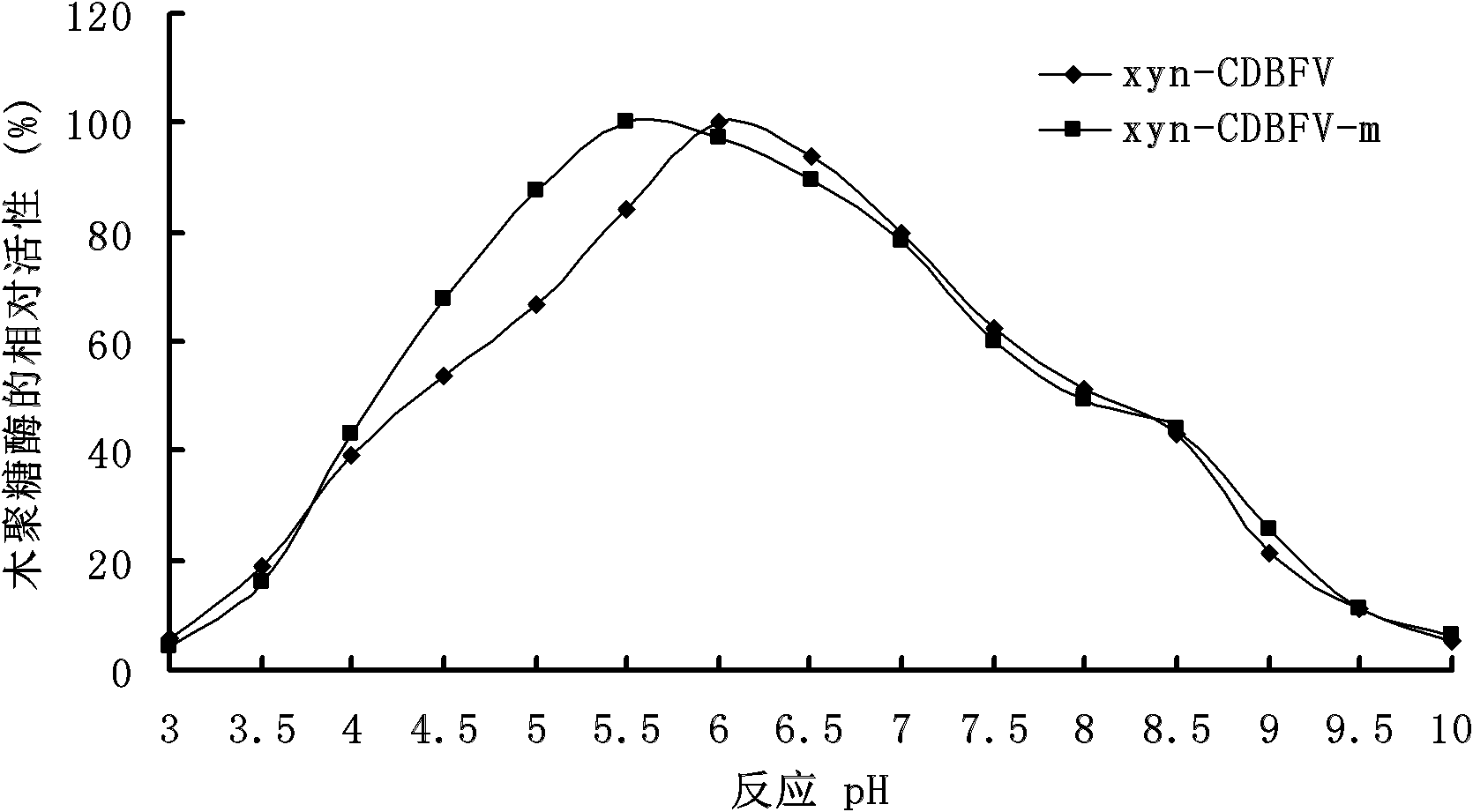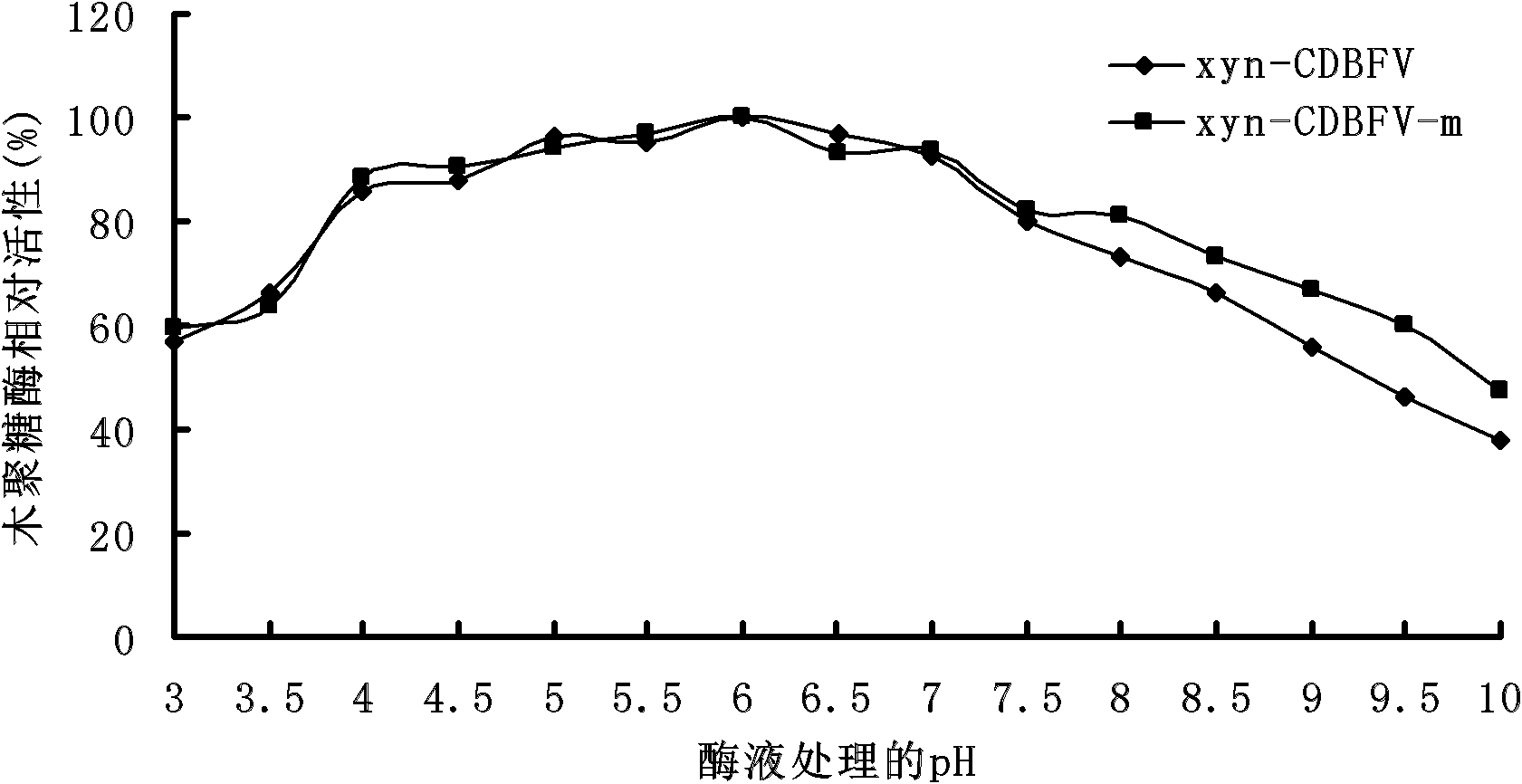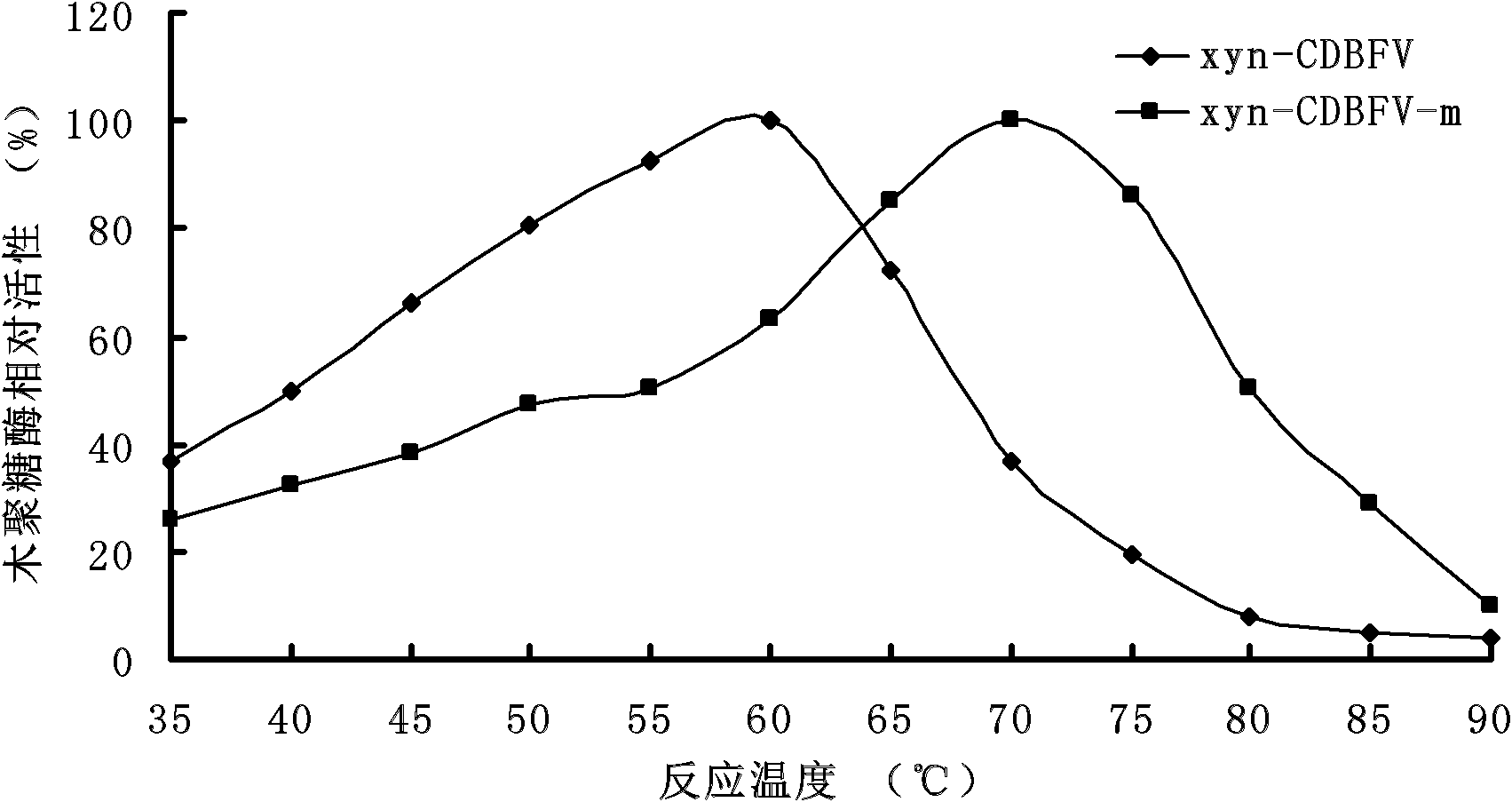Xylanase xyn-CDBFV-m with modified thermal stability, gene thereof, and application thereof
A technology of xyn-cdbfv-m and xylanase, applied in the field of genetic engineering, can solve the problems of increased viscosity, increased volume of chyme, decreased effects of nutrients and endogenous enzymes in the digestive tract, etc. The effect of applying potential
- Summary
- Abstract
- Description
- Claims
- Application Information
AI Technical Summary
Problems solved by technology
Method used
Image
Examples
Embodiment 1
[0033] Example 1. Rational Design of Mutations Related to Thermal Stability of Xylanase xyn-CDBFV
[0034] (1) Homologous modeling
[0035] The xyn-CDBFV catalytic domain of xylanase from the rumen fungus Neocallimastix patriciarum, homology modeling is based on the crystal structure of Bacillus subtillis B230 xylanase (PDB: 1IGO) as a template, through the SWISS-MODEL server The Model module is completed by means of homologous comparison modeling, and it is named xyn-NP.pdb, and the Deepview / Swiss-PdbViewer software is used for three-dimensional model browsing and analysis.
[0036] (2) Disulfide bond design and selection
[0037] The present invention utilizes the disulfide bond design software Disulfide by Design (version 1.20) to perform disulfide bond prediction analysis on xyn-NP.pdb. After analysis, there are 24 potential sites that can form disulfide bonds in the three-dimensional structure of xyn-NP.pdb. They are: 33 and 58; 43 and 47; 46 and 62; 51 and 209; 61 and...
Embodiment 2
[0044] Embodiment 2, the synthesis of xyn-CDBFV and xyn-CDBFV-m of xylanase catalytic domain gene
[0045] The catalytic domain genes xyn-CDBFV and xyn-CDBFV-m from the rumen fungus Neocallimastix patriciarum, according to the codon preference of Pichia pastoris (Zhao Xiang, 2000), without changing the amino acid sequence Sequence modification is performed below. During the transformation, sites in the form of GT...AG should be avoided, and the appearance of AT-rich sequences (such as ATTTA, AATAA, AATTAA, etc.) should be avoided as much as possible. These sequences are related to the stability of mRNA. Send the modified and designed gene sequence to Nanjing Jinruisi Company for whole gene synthesis.
Embodiment 3
[0046] Example 3, Construction of recombinant expression vectors pET-22b(+)-xyn-CDBFV and pET-22b(+)-xyn-CDBFV-m
[0047] According to the sequence design of the synthetic gene, the 5' end of the PCR primer contains the Nco I endonuclease site, and the 3' end contains the EcoR I endonuclease site. The primer sequences are as follows:
[0048] 5' end primer pET-xyn-F: GCAC CCATGG GACAATCCTTCTGTTCCAGCGC; 3' end primer pET-xyn-R: GCAC GAATTC TTAGTCACCGATGTAAACCTTTG; using the synthetic gene as a template, PCR amplification was performed with the above primers, and the amplified fragment was cloned into the vector pET-22b(+) to obtain the recombinant vector pET-22b(+)-xyn-CDBFV.
[0049] The construction of pET-22b(+)-xyn-CDBFV-m is the same as the above vector, and its primers are 5' end primers pET-xyn-m-F: GCAC CCATGG GACAATCCTTCTGTTCCAGCG; 3' end primer pET-xyn-m-R: GCAC GAATTC TTAGTCACCGATGTAAACCTT.
PUM
 Login to View More
Login to View More Abstract
Description
Claims
Application Information
 Login to View More
Login to View More - R&D
- Intellectual Property
- Life Sciences
- Materials
- Tech Scout
- Unparalleled Data Quality
- Higher Quality Content
- 60% Fewer Hallucinations
Browse by: Latest US Patents, China's latest patents, Technical Efficacy Thesaurus, Application Domain, Technology Topic, Popular Technical Reports.
© 2025 PatSnap. All rights reserved.Legal|Privacy policy|Modern Slavery Act Transparency Statement|Sitemap|About US| Contact US: help@patsnap.com



